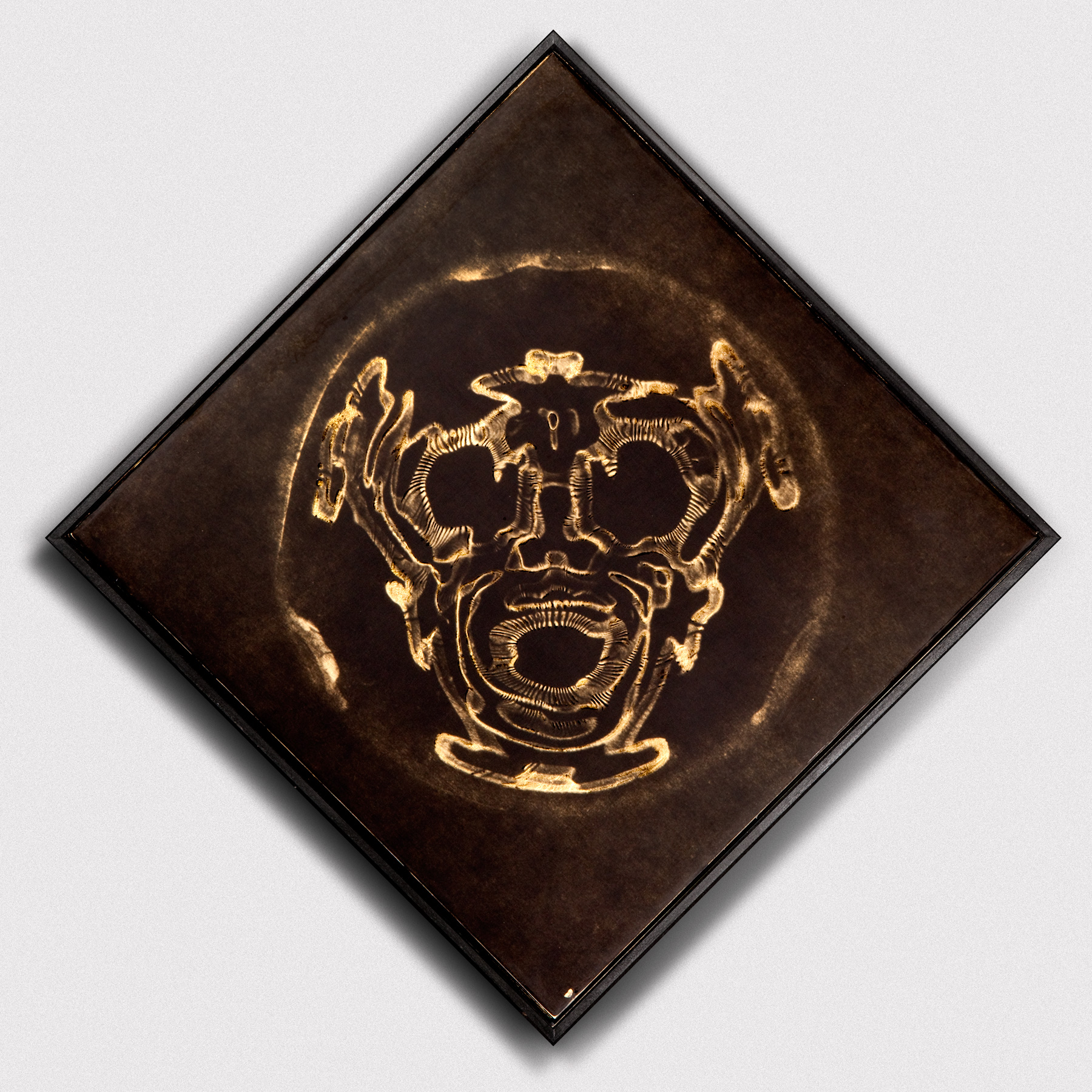Seeing The Patterns In Sound
A pair of artists finds ghostly imagery in sound vibrations.

Vibrations of D. Credit: Louviere + Vanessa
In the late 18th century, German physicist and musician Ernst Chladni demonstrated how vibrations could be used to create striking imagery. By spreading fine sand across the top of a metal plate and running a violin bow alongside, Chladni showed that the sand would settle into distinct patterns, depending on the frequencies of the sound waves produced by the bow.
Centuries later, in the 1960s, a Swiss physician named Hans Jenny built on Chladni’s experiments in an effort to study vibrational phenomena—what he called “cymatics.” Visual artist Jeff Louviere happened upon the works of Jenny and Chladni while researching another project, and he and his partner, photographer Vanessa Brown, became inspired to conduct their own experiments to see what sound could look like. The resulting work became Resonantia (Latin for “echo”), a multimedia project centered around 12 images produced by vibrations.

To create the images, the pair (also known as Louviere + Vanessa) built their own version of a Chladni plate in their New Orleans home. Louviere dismantled one of his guitar amps and separated the speaker, aiming it upwards. On top of the speaker, he placed a lined box and filled it with water and black food coloring. He then hooked the speaker up to an amp plugged into a frequency generator—that is, a computer program with an oscillator—that he could use to play musical notes at various frequencies. A bright ring light mounted over the box illuminated the water below.
As Louviere cycled through musical notes at different frequencies and volumes, from low to ear-piercing—“there was a point where it was so high we had to put the dogs outside so it wouldn’t hurt their ears,” he says—Brown took photographs through the ring light of the water formations produced by the vibrations.
“It was just constant shooting, and trying like every frequency we could stand,” Louviere says.
Brown took about 2,000 photographs in total, and the duo narrowed those down to a dozen, based on the 12 notes of the chromatic scale. They chose the images with the most complex or aesthetically pleasing patterns.
Louviere says he was surprised by some of the patterns they produced. “It’s the first time we’ve done a series of work where we didn’t know what the end result was going to look like,” he says. One of his favorites is the image for F sharp, which is “kind of a weird sound,” he says. The result looked “like a puffer fish or an alien or something; it’s got all these crazy lines in it. That one was pretty remarkable.”
And the image for G turned out to be even more eerie. Louviere had been researching the frequencies of various sounds like heartbeats and hurricanes when he read a conspiracy theory about a strange hum called the brown note—a low frequency that would supposedly cause people to lose control of their bowels. When Louviere tried to hit that frequency with their device, Brown captured a vibration pattern that looked like a demonic face.

“It looked like Satan,” Louviere says. “We were like, oh my god.”
Satanic visages aside, the images themselves are a creative example of physics at work. “It’s kind of a classic demonstration in acoustics,” says Trevor Cox, a professor of acoustic engineering at the University of Salford in England. “These are actual physical patterns.”
Every object has a characteristic frequency, or frequencies, at which it vibrates most, with the least input of energy. Those vibrations are associated with standing wave patterns called modes. When the Chladni plate, for instance, vibrates in one of its modes, a pattern appears in the sand on the plate.
“What’s happening is, the sand is moving away from the bits [on the plate] where it’s vibrating a lot” says Cox, and it’s settling in places where there are no vibrations (these places are called “nodes”). And, “if you up the frequency, you’ll find the patterns get really complicated,” because more of those nodes occur.
Cox, who isn’t affiliated with Resonantia, surmises that the patterns depicted in the images formed when the water vibrated in its natural mode. The bright light that Brown shone on the water illuminated the areas that rippled the most.
To achieve the vintage look of the final images, Louviere + Vanessa first printed each photograph onto kozo paper, which is thin and tissue-like, and lay that on top of a metal substrate covered in gold leaf. Then they poured resin over the paper, which turned transparent, allowing the gold leaf to shine through.
The prints have been on display at various galleries across the United States, including A Gallery for Fine Photography in New Orleans and the Verve Gallery in Santa Fe, New Mexico. You can also learn more about a record and music video that Louviere + Vanessa produced for Resonantia, based on the sounds and images, here.
Chau Tu is an associate editor at Slate Plus. She was formerly Science Friday’s story producer/reporter.